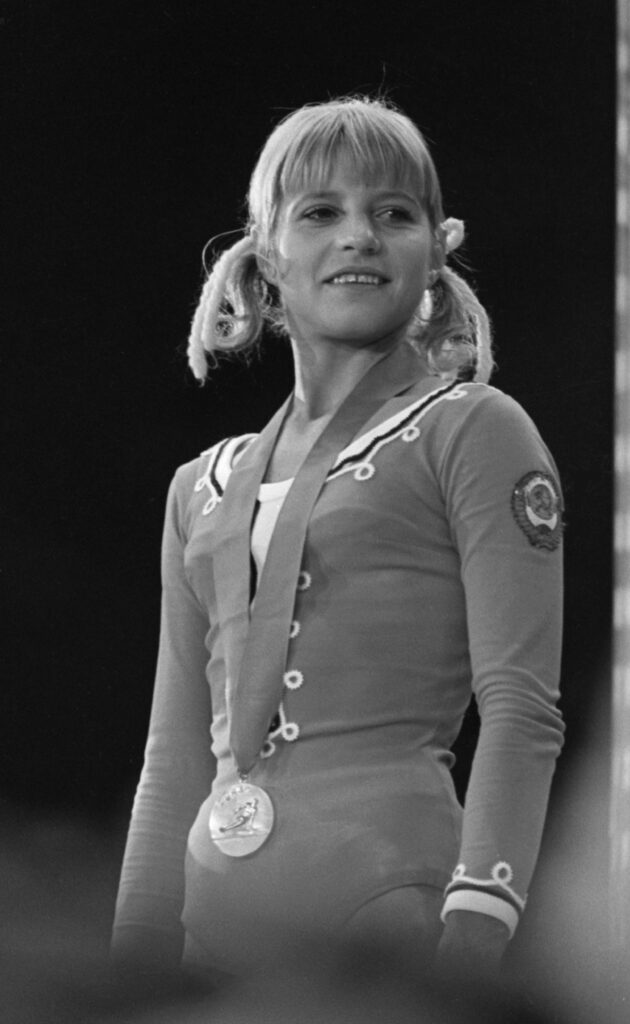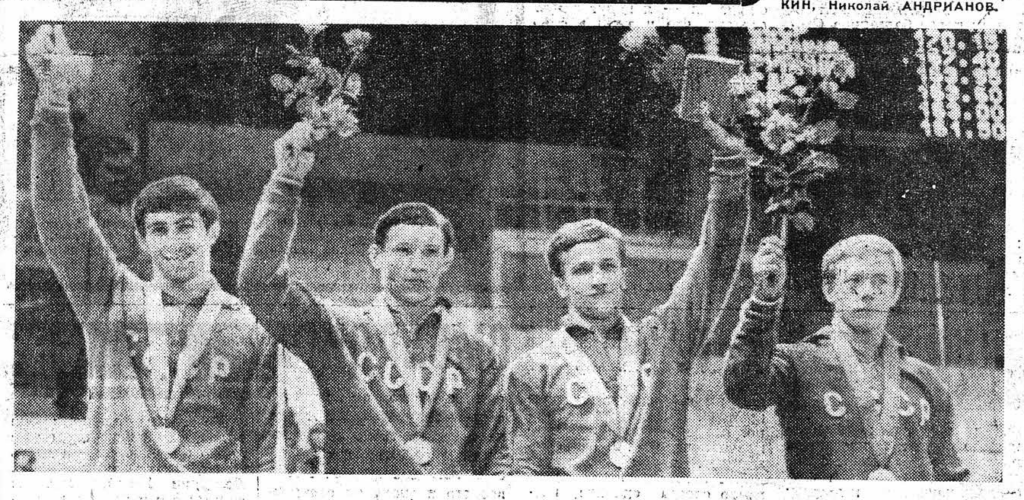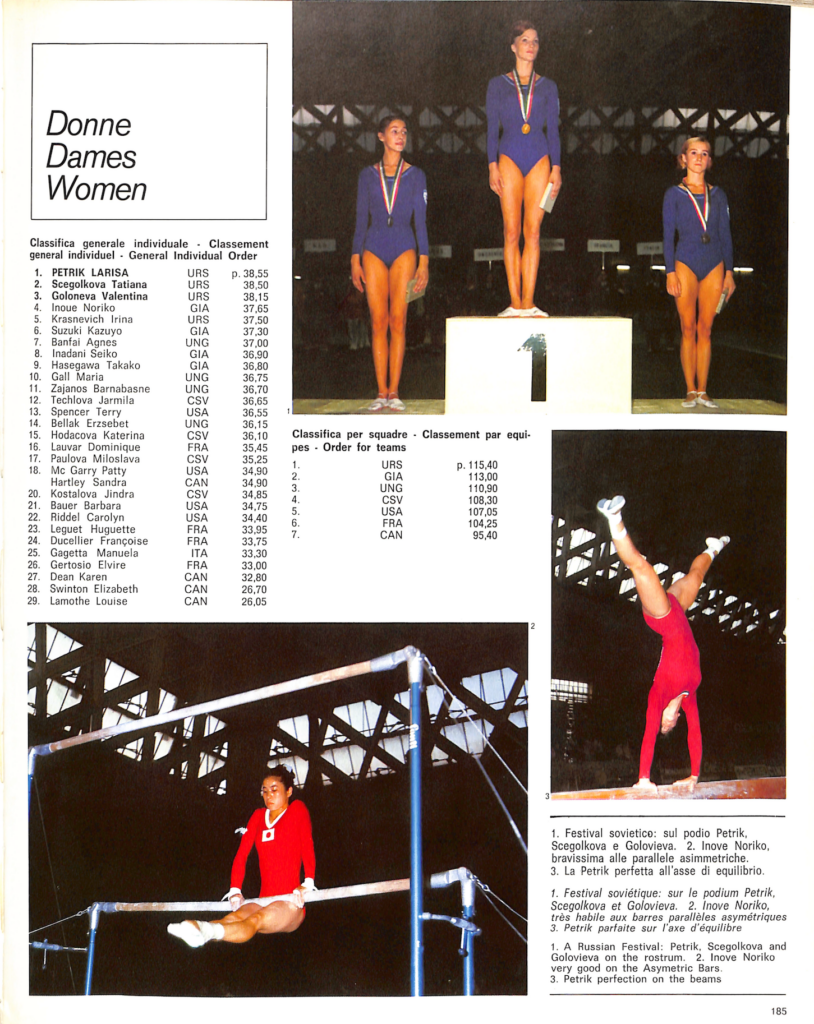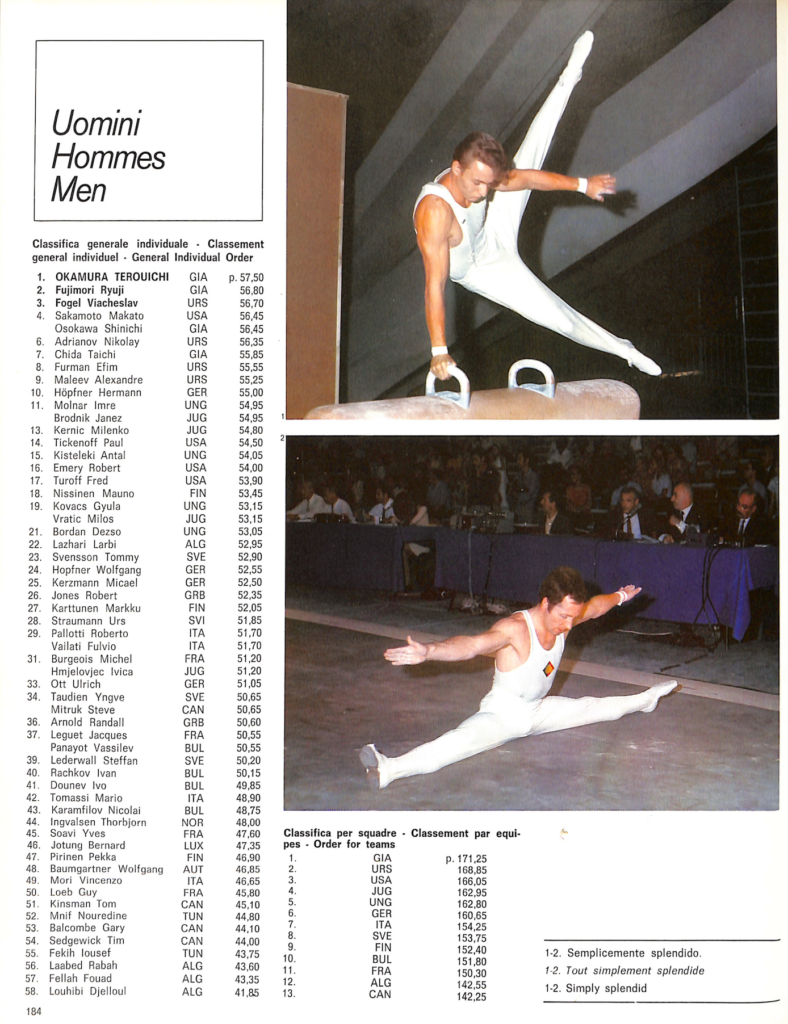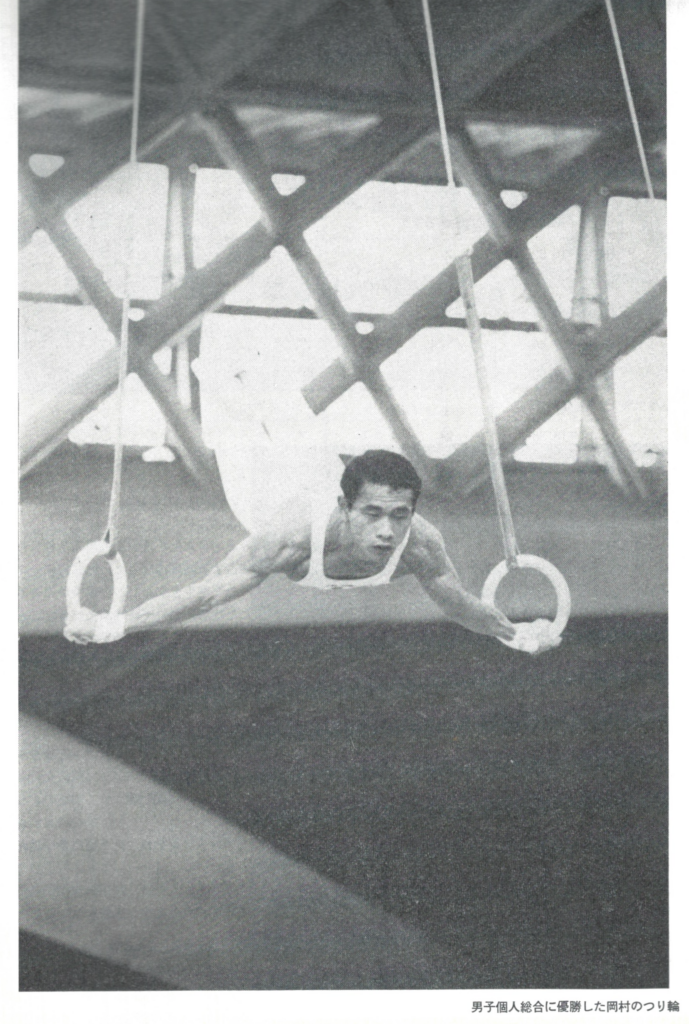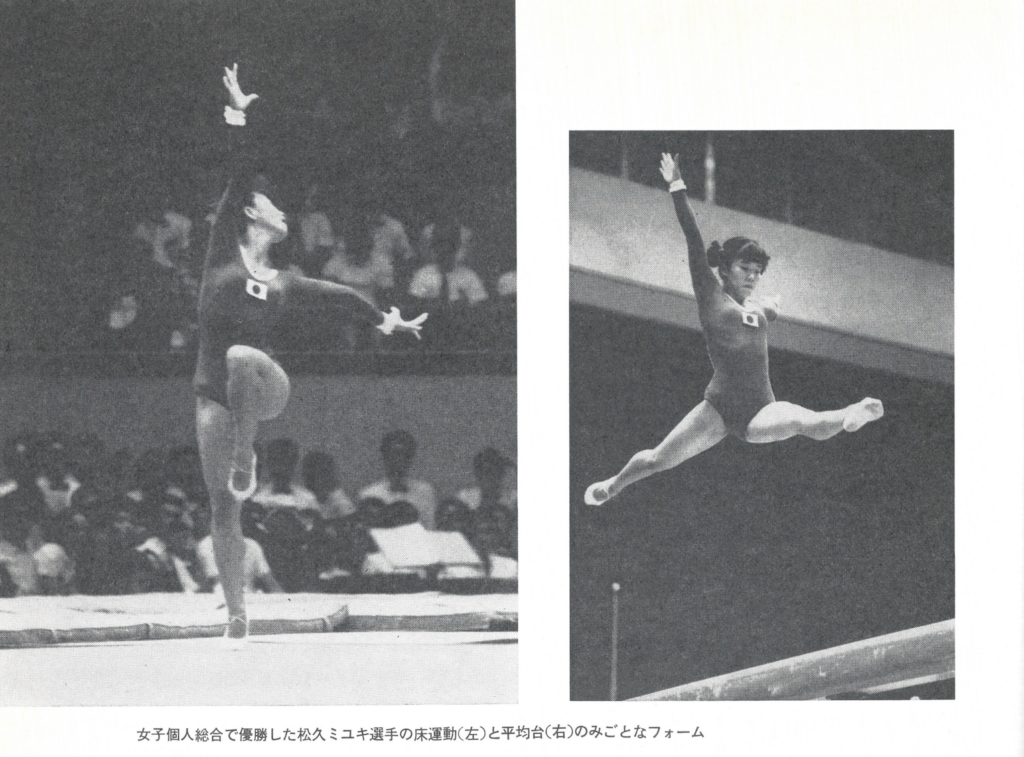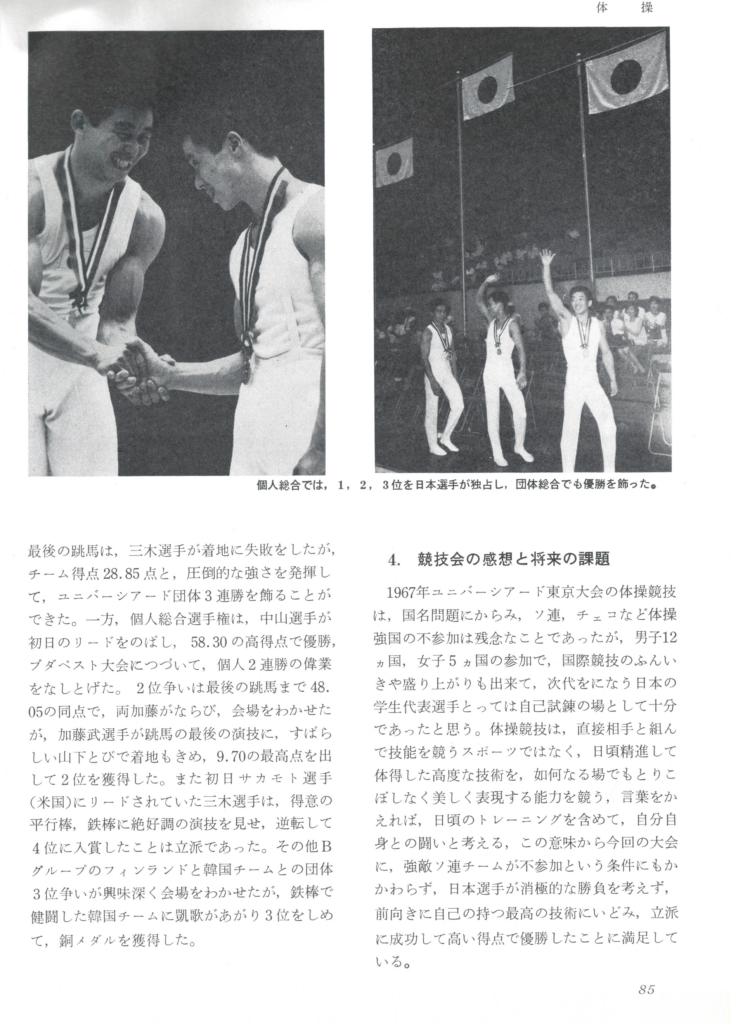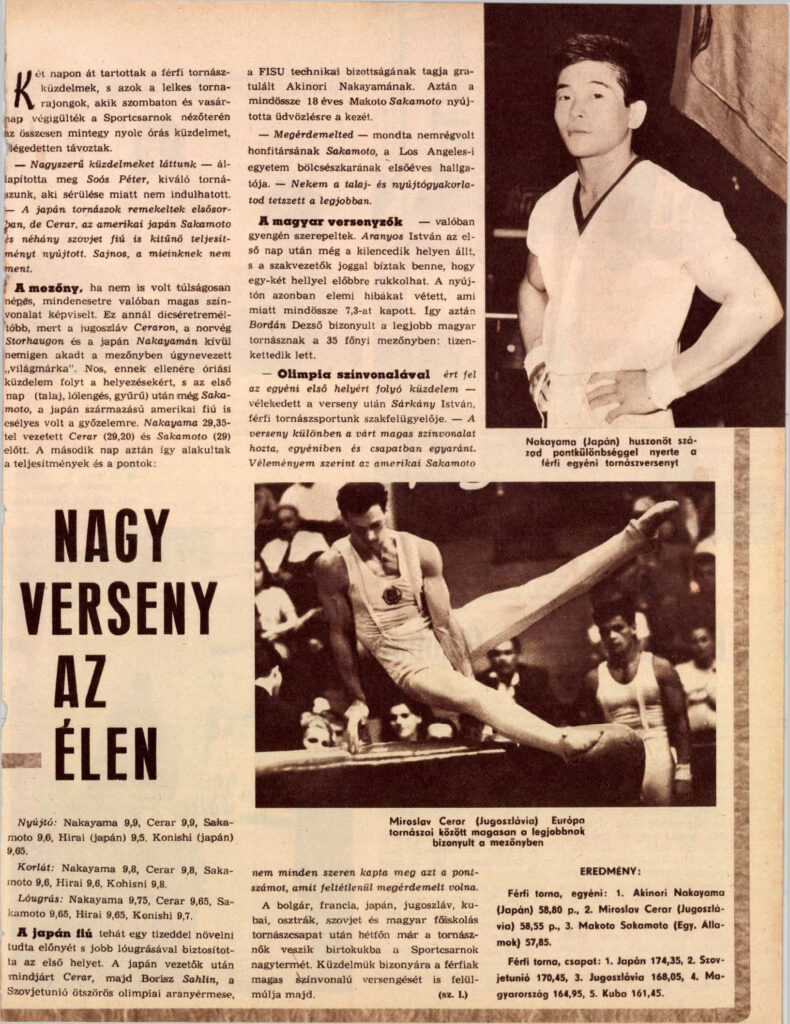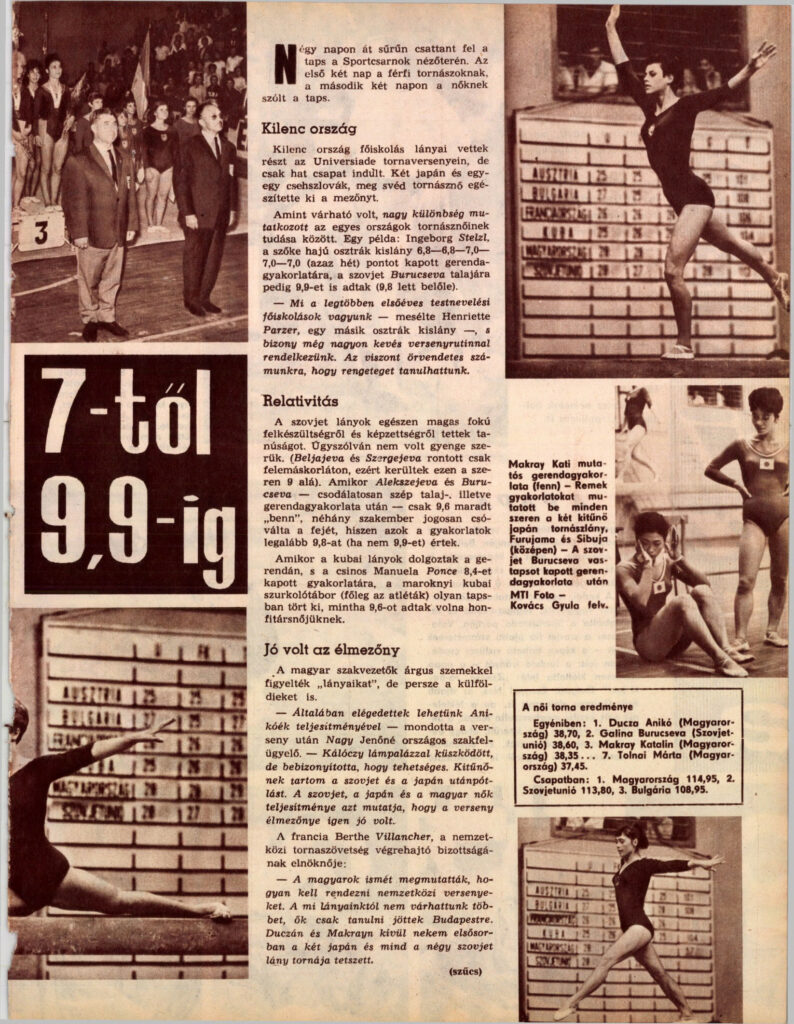At the 1973 University Games, the Soviet women were able to repeat their 1970 success, winning team gold and sweeping the all-around podium. They also won gold on every individual apparatus — with Olga Korbut winning three of the four event finals. (The Moscow University Games held an all-around final and apparatus finals for the first time.)
The increasing level of difficulty was evident at the 1973 Universiade. Even though the Women’s Technical Committee was debating whether to ban a standing back tuck on beam, more and more gymnasts were attempting the skill after Korbut and Thies did the skill in Munich. At least three gymnasts performed the skill at the 1972 Soviet National Youth Championships, as did Joan Moore at the 1972 Chunichi Cup. And at the 1973 University Games, Hayashida also attempted a standing back tuck.
Women’s vault was also changing. Gehrke had done a Tsukahara at the 1972 Riga International, and one year later, the vault was becoming more commonplace with Bogdanova winning the vault title in Moscow with her “masculine Tsukahara,” as Sovetsky Sport called it.
Here’s what happened at the 1973 University Games…
